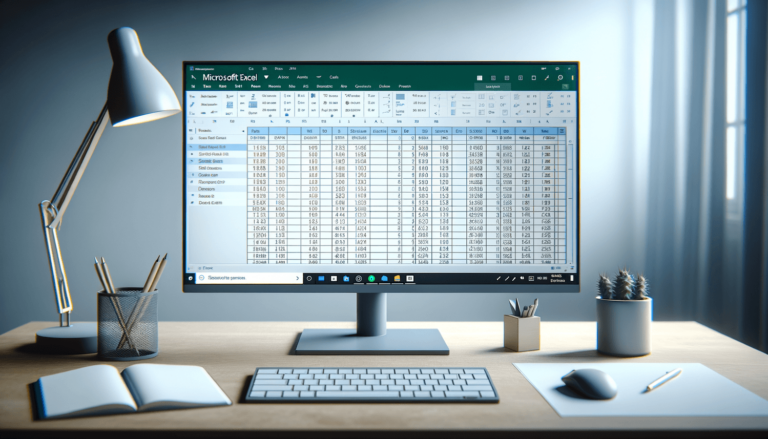

Microsoft Excel is a powerful tool that offers a range of features to help users create and manipulate data with ease. One of these features is gridlines, which are the horizontal and vertical lines that separate cells in a worksheet. Although these gridlines can be helpful when creating a spreadsheet, they can also make it difficult to read and navigate your data. Fortunately, Excel provides an easy way to remove gridlines from your worksheet with just a few clicks. In this blog post, we will walk you through the steps to remove gridlines in Excel and make your data more readable and easier to work with.
While gridlines are useful to make a spreadsheet look organized, it can sometimes distract users from the actual data by creating a visual chaotic look. Users may also prefer plain backgrounds for presentation purposes or when creating print materials. In other cases, users may want to use their preferred pattern or colors as an alternative to gridlines. By removing gridlines from your spreadsheet, you can make it look more presentable, easier to read, and customizable to your taste or preferences.
Open your Excel Workbook and select the worksheet that you would like to make changes to.
On the Ribbon menu, locate the ‘View’ tab which displays different viewing and print options.
In the Show group in the View tab, you’ll see the ‘Gridlines’ box that is checked by default.
To remove the Gridlines, simply uncheck the Gridlines box, and the gridlines on the worksheet will disappear immediately.
After removing the gridlines from your worksheet and making any other desired changes to formatting or layout, don’t forget to save your changes by choosing the ‘save’ option from the File menu.
Removing gridlines in Excel can give data a cleaner look, help make it easier to print, and enable users to express more of their creative skills in designing the spreadsheet. And although Excel provides default settings to show or hide gridlines, it is easily customizable and allows users to create a spreadsheet that’s tailored to their preference. By following the steps outlined in this blog post, you can now remove or add gridlines as well as explore other ways to format data to make your workbook more readable.
If you’re using an earlier version of Excel (2010 or earlier), the steps to remove gridlines are slightly different. Here’s how to do it:
Open your Excel Workbook and select the worksheet that you would like to make changes to.
From the menu bar, click on ‘View’ and select ‘Gridlines’ from the ‘Show/Hide’ group.
To remove the gridlines, simply uncheck the Gridlines box, and the gridlines on the worksheet will disappear immediately.
After removing the gridlines from your worksheet and making any other desired changes to formatting or layout, don’t forget to save your changes by choosing the ‘save’ option from the ‘File’ menu.
If you want to print your worksheet without gridlines, you can do so with a simple setting change. Here’s how:
From the menu bar, click on ‘File’ and select ‘Print’ from the options that appear.
In the ‘Print’ window, click on ‘Page Setup’ at the bottom of the page.
In the ‘Page Setup’ dialog box, select the ‘Sheet’ tab.
Under the ‘Print’ section, uncheck ‘Gridlines’ and click ‘Print’ or ‘OK’ to print your worksheet without gridlines.
Excel provides various customization options for gridlines. For example, users can change the line color or style, or even change the spacing and thickness of the gridlines. Here’s how to do it:
Open your Excel Workbook and select the worksheet that you want to customize the gridlines of.
On the Ribbon menu, locate the ‘View’ tab which displays different viewing and print options.
In the Workbook Views group in the View tab, click on ‘Page Layout.’
In the ‘Page Layout’ tab in the Ribbon, locate the ‘Gridlines’ section in the Sheet Options group to customize various gridline settings including the color, style, and weight.
Removing gridlines in Excel makes your spreadsheet easier to read, helps to customize the document, and makes it more visually pleasing. While Excel provides a default setting for gridlines, it’s possible to change these settings to fit your personal preferences. The process of removing gridlines is simple and quick, allowing you to focus on other more important aspects of your work.
Here are some frequently asked questions about removing gridlines in Excel:
Yes, you can remove gridlines temporarily by clicking ‘View’ and unchecking the ‘Gridlines’ box. The changes will appear on your screen without affecting the actual document or data.
Yes, you can remove gridlines from a specific section of your worksheet by selecting the cells you want to modify, clicking on ‘Borders’ under the ‘Home’ tab, and then choosing ‘No Border’.
If gridlines are still printing even when they’re not visible on the screen, it could be because of a setting you’ve enabled in the ‘Print Settings’ dialog box. To change this setting, go to ‘File’ and click on ‘Print’. Under ‘Settings’, uncheck ‘Print Gridlines’.
Yes, you can customize both the color and style of your gridlines. Go to the ‘Page Layout’ tab, click on ‘Gridlines’, and choose the desired color and style from the options that appear.
You can remove gridlines from multiple worksheets at once by selecting the sheets that you want to modify, and then following the steps to remove the gridlines as outlined in the blog post above.
Explore the world of Microsoft PowerPoint with LearnPowerpoint.io, where we provide tailored tutorials and valuable tips to transform your presentation skills and clarify PowerPoint for enthusiasts and professionals alike.

Your ultimate guide to mastering Microsoft Word! Dive into our extensive collection of tutorials and tips designed to make Word simple and effective for users of all skill levels.

Boost your brand's online presence with Resultris Content Marketing Subscriptions. Enjoy high-quality, on-demand content marketing services to grow your business.
